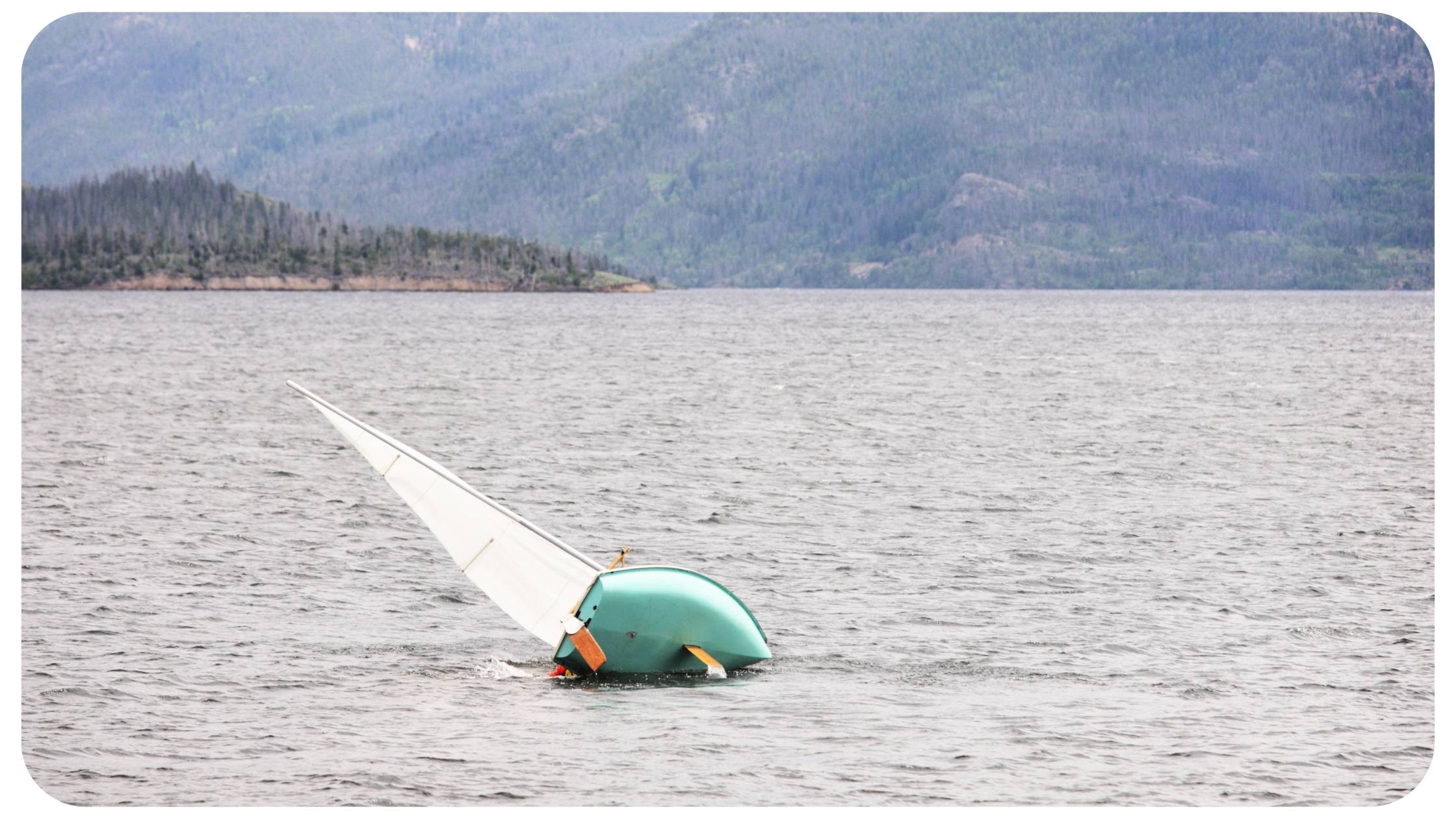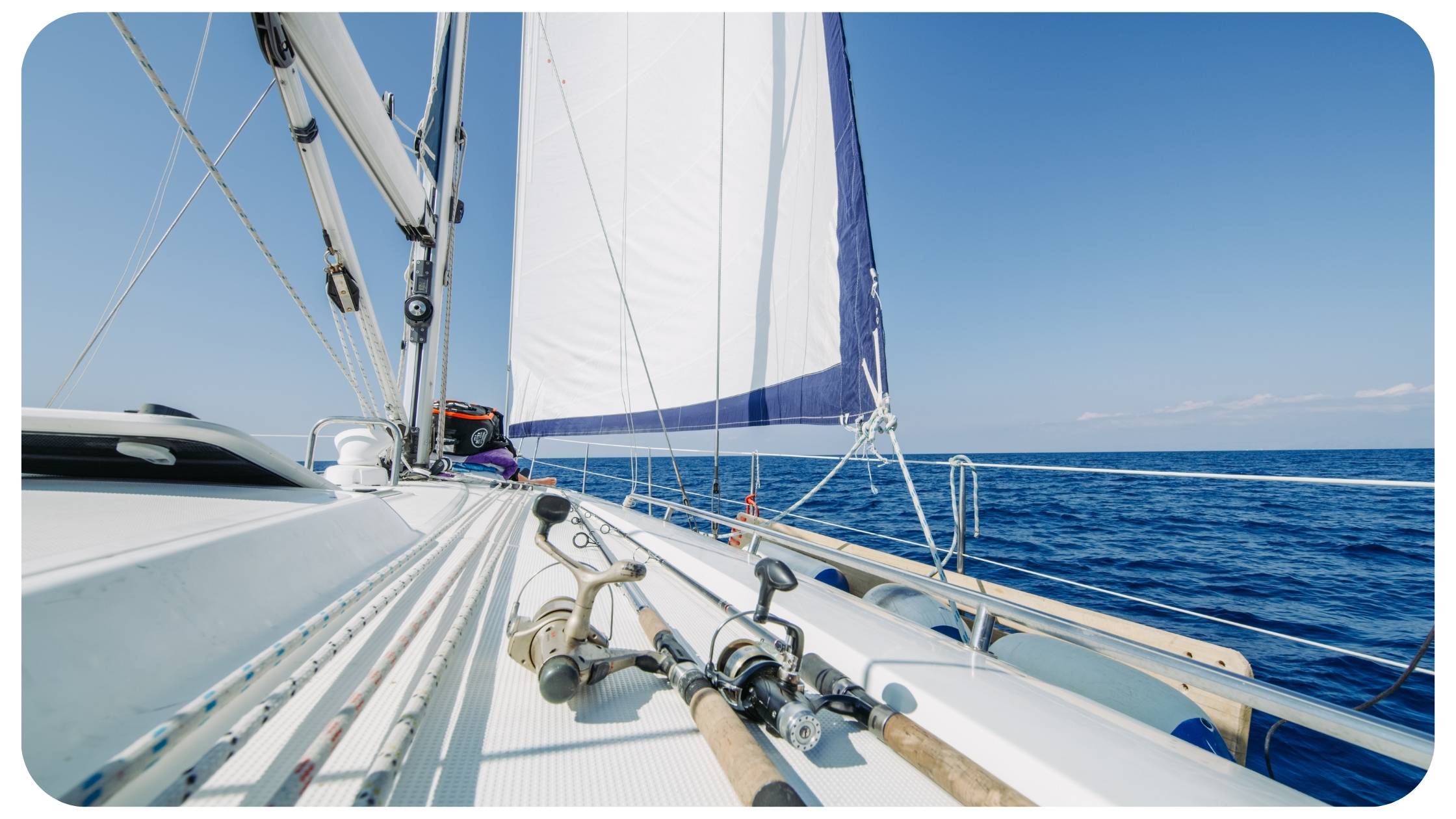
What Keeps a Sailboat from Tipping Over | How do you Keep a Sailboat from Capsizing? | How Hard is it to Tip a Sailboat? | Can a Capsized Sailboat Right Itself? | How to Prevent your Sailboat from Tipping Over | How Much Should a Sailboat Heel?
I’ve always said that there are very few physics lessons that couldn’t be taught aboard a sailboat. Perhaps the most amazing lesson is how a sailboat stays upright (almost) even in a 20-knot wind. However, though the physics and design principles involved are amazing, the answer to the inevitable question, ‘can a sailboat tip over’, is yes.
What Keeps a Sailboat from Tipping Over
This is probably the most important part of any sailboat design. In order for a sailing boat to be able to point into the wind and tack into a strong wind, the balance between the sideways force generated by the wind on the sails needs to be perfectly balanced by the ‘ballast’ that the sailboat has. Now, this ballast or counterweight can take many forms. I some boats the majority of this weight is in the hull. In others, more of that weight is in the keel. There are two main factors at play here. Firstly, the total weight of the counterweight. Second, how far down is the weight?
For a sailboat to stand the greatest chance of NOT tipping over, the weight and the position of the counterweight needs to be appropriate based on the total sail area and height of the sails.
How do you Keep a Sailboat from Capsizing?
Though the design of the boat and the weight and position of the ballast is crucially important in order to keep a sailboat from capsizing, there’s also some responsibility on whoever is sailing the boat.
Boat designers don’t design sailboat to never capsize. This is why the answer to ‘can a sailboat tip over’ always has to be ‘yes’. In almost all cases, if a sailboat does tip over, it’s usually due to sailor error of some sort (with a few exceptions).
How Hard is it to Tip a Sailboat?
It is pretty difficult to tip over a sailboat. In fact, in ‘normal’ wind conditions; i.e. conditions that most people would consider going out in, it is almost impossible to tip over a well-balanced yacht. When I was learning to sail I remember asking the sailing instructor this exact question, ‘can a sailboat tip over?’ His answer, why don’t you try?
We tried fairly hard and didn’t even come close. The laws of physics were definitely against us, but that was clearly very reassuring.
As I mentioned previously, cases of sailboats capsizing will almost always be caused, at least in part, by some form of sailor error. In most cases, this will be not reefing early enough. However, this alone is not usually enough to capsize a yacht. There will usually also need to be external factors, such as a large, poorly timed wave, or something similar, in order to cause a sailboat to tip over entirely.
Can a Capsized Sailboat Right Itself?
If you do happen to be unlucky enough to be on a sailboat when it tips over, things may not be as bad as you think. Under many circumstances, a sailboat can right itself. As we mentioned previously, sailboats are designed to be balanced so the weight in the bottom of the boat (whether it’s in the keel or hull) is greater than, or equal to the force applied by the wind on the sails. What this usually means is that, once the sails are depowered (as they are now underwater), the weight in the keel or ull is greater than the resistance provided by the water. In theory, this means that a sailboat should right itself.
However, there are a few key factors which can heavily influence the success of this. Firstly, every second that the sailboat is capsized is critical, as it’s likely to be taking on water. This means that:
A. The top of the boat becomes heavier, making rightling less likely, and
B. If the boat is taking on water, the end result will be that it’ll sink
How to Prevent your Sailboat from Tipping Over
The first and main consideration if you want to avoid your sailboat tipping over is to choose a well designed boat to begin with. As you may already know, not all sailboats are created equal. Some are designed for river, lake or coastal sailing, where others are designed for crossing oceans. If you want to sail in heavy weather a long way from land (the places you are most likely to tip over a sailboat) you will want the latter. Bluewater cruisers tend to be much better balanced and designed for the heavy conditions you are likely to experience offshore, making tipping over your sailboat far less likely.
Next, you need to sail sensibly. I was always taught that, ‘if you’re thinking about reefing, you should already be doing it’. It makes so much sense, and it’s so much easier and less stressful just to get on with reefing nice and early, rather than waiting to see if the wind eases off, only to find that it strengthens. This then makes reefing much harder and you’ll fid that your sails become overpowered in only a matter of seconds.
How Much Should a Sailboat Heel?
This is more a question of performance rather than safety. In all but the most extreme conditions, and ‘over-heeling’ will simply result in the sailboat turning into the wind and the sailes depowering. However, if you want to keep your boat sailing as efficiently as possible, we’re probably looking at somewhere in the 20-25 degree range.
You’ve probably seen racing yachts in regattas where you have the whole teal sitting on the upwind wide of the boat with their legs dangling over the edge. This isn’t just because it’s the best place to sit. It’s also about weight displacement. By having as much weight as possible on this upwind side, it allows the boat to sail more efficiently and higher int the wind, meaning it goes faster. Obviously this isn’t so important when you are cruising around the Med, but it’s always worth remembering when you are on a long tack.
Can a Sailboat Tip Over? A Summary.
Can a sailboat tip over? Yes. Is it likely that you’ll ever be in a situation where a sailboat you are sailing on tips over? No.
This is, of course, only in reference to cruising sailboats, not racing yachts or dinghies.
There are a couple of key points to always remember:
- Buy a ‘proper’ sailboat
- Reef early
If you are sailing a cruising sailboat, you have to work fairly hard to get it to tip over. I’d even go as far as to say that, in relatively sensible conditions, and with a well balanced yacht, it’s pretty impossible. However, if you add some heavy weather into the mix, go offshore and have a few other factors going against you, it’s certainly a scenario worth preparing for. However, if you follow the golden rule of reefing early, you should always be fine.
I guess we could start talking about rogue waves, but perhaps that’s one for another article.



